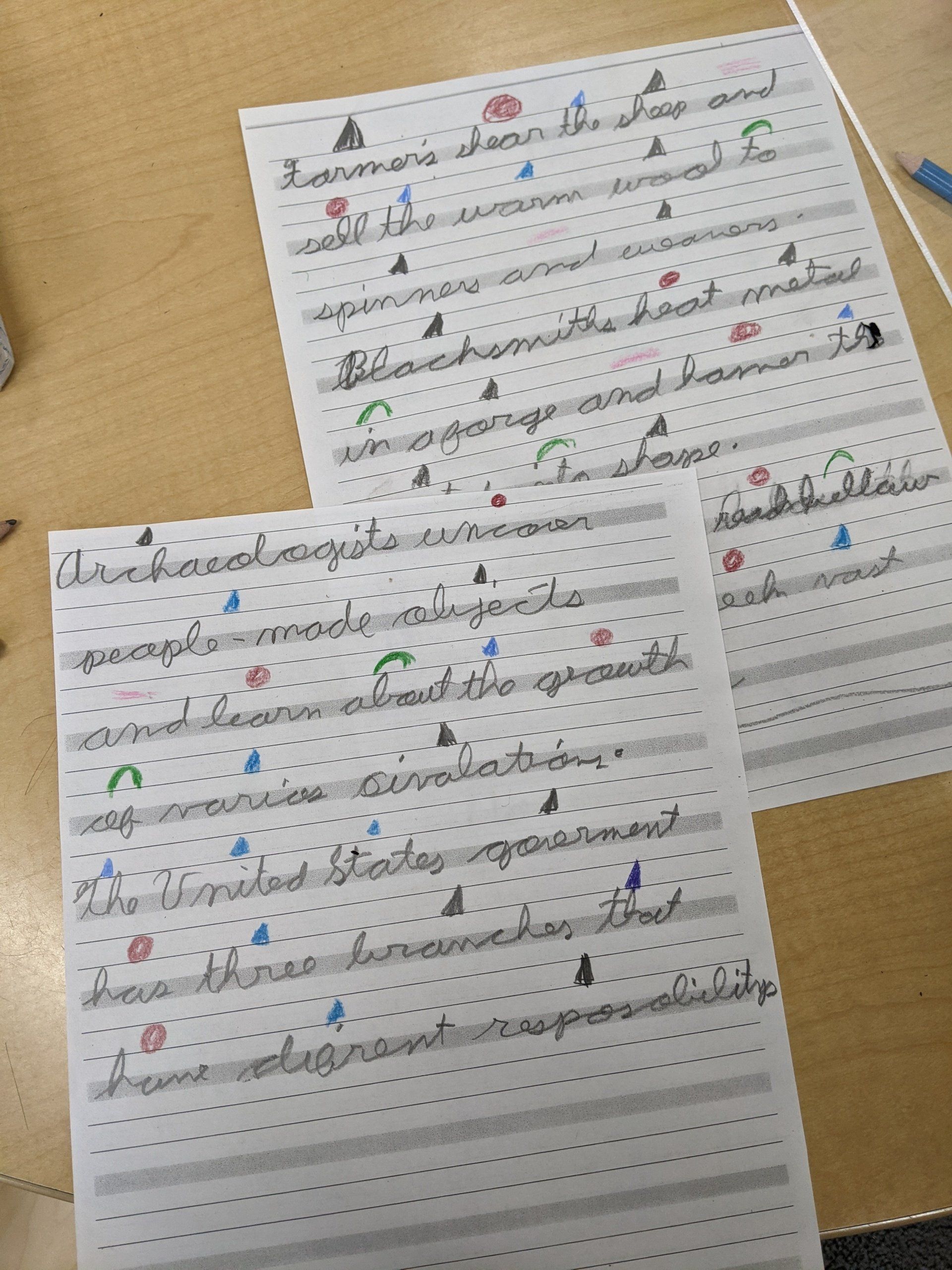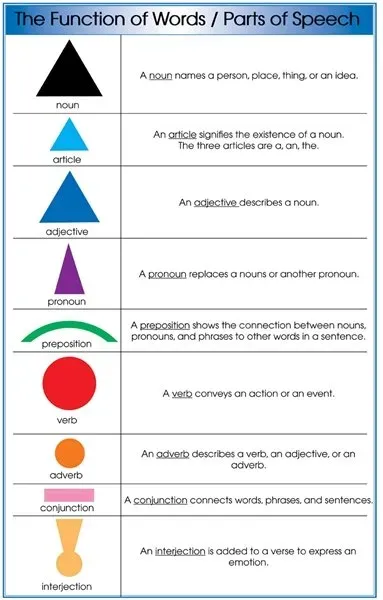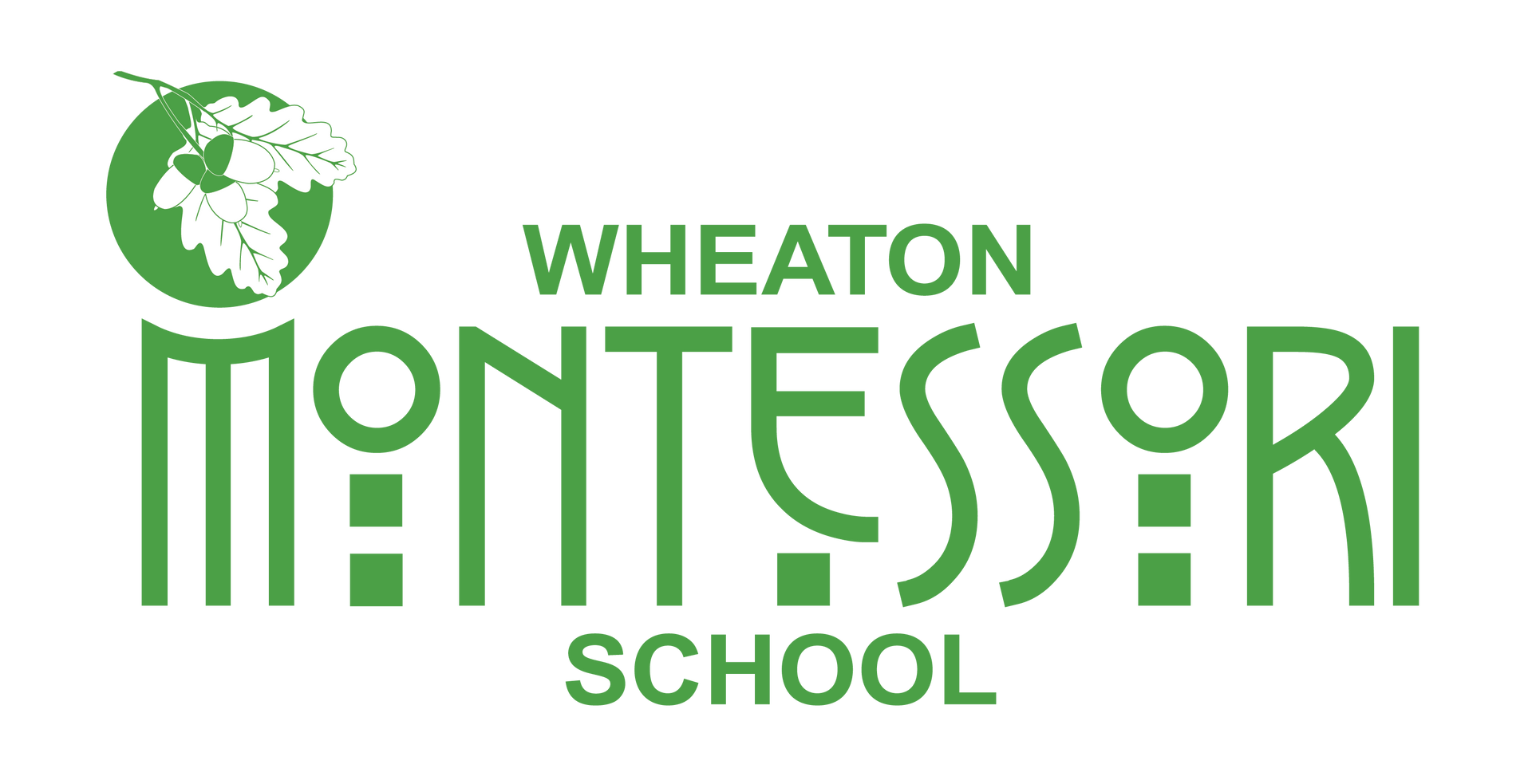
Do you remember sitting in your Elementary classroom with your grammar textbook, diagramming and analyzing someone else's sentences?
It looks quite a bit different in a Montessori classroom. In the picture above, we see the following sentences:
"Archeologists uncover people-made objects and learn about the growth of various civilizations."
"The United States government has three branches that have different responsibilities."
"Farmers shear the sheep and sell the warm wool to spinners and weavers."
"Blacksmiths heat metal in a forge and hammer it... into shape."
Now look closely at the colored shapes above the word in the sentences. Do you notice a pattern? Do all of the verbs have the same symbol above them? How about nouns? Adjectives?
Grammar is taught early and in what we call a spiraling curriculum; that is, we circle back on the same content as the child gets older, building on previous knowledge and giving more depth to their understanding. Parts of speech are taught in a very specific order, and each one has a corresponding symbol that children use in many activities.
Beginning in the final year of primary, children typically learn about nouns, articles, and verbs, as well as their corresponding symbols. This helps them to understand the core parts of our sentences and gives them an introduction to grammar in a way that appeals to them.
Sometime during that final year in primary or the first year of lower elementary, children are introduced to grammar through what we call the function of words. Traditionally, a model of a farm, complete with animals, is used to guide children through the process. Again, they begin by learning that nouns are naming words, and they name each animal and feature of the farm. They then go on to learn the corresponding articles, followed by all other parts of speech, including adjectives, verbs, adverbs, pronouns, conjunctions, prepositions, and interjections.
Once a child has learned the functions of words, they will move on to the Montessori grammar command cards. Knowing that children learn by doing, these cards give children specific directions to physically follow so that they may experience the words for themselves.
Another classic Montessori activity involves the use of colored wooden grammar boxes. Children use cards to recreate sentences, word by word, and sort the words by various parts of speech.
There are many extensions to grammar work that Montessori children enjoy. Some will write their own sentences and use colored pencils to label each word with its corresponding grammar symbol. Others enjoy using grammar strips: a material that shows a series of grammar symbols which students must use a guide to write a sentence with that particular pattern.
Going beyond grammar, elementary-aged children learn to analyze sentences. This begins simply with subjects, verbs, direct, and indirect objects. As children get older and have a better grasp on language, the work extends considerably.
Children in upper elementary classes learn about complex sentence structures. This includes structures like predicate adjectives and nominatives, attributive adjectives, various types of phrases and clauses, and many more.
See below for a few of the symbols used - or better yet, write your own sentences and grab some colored pencils!



